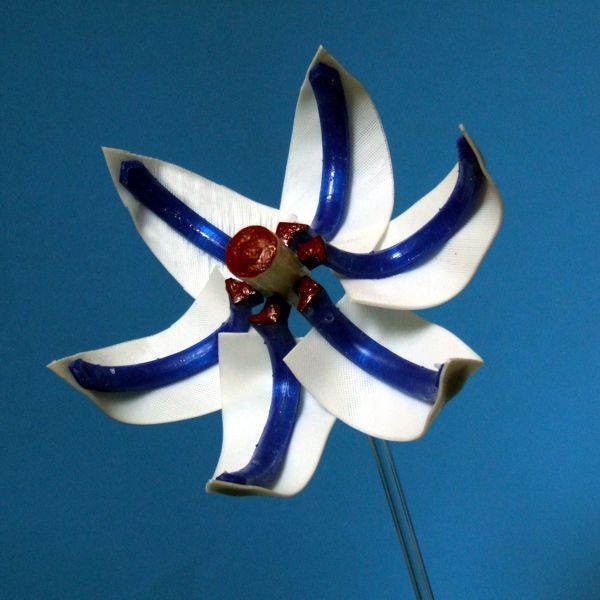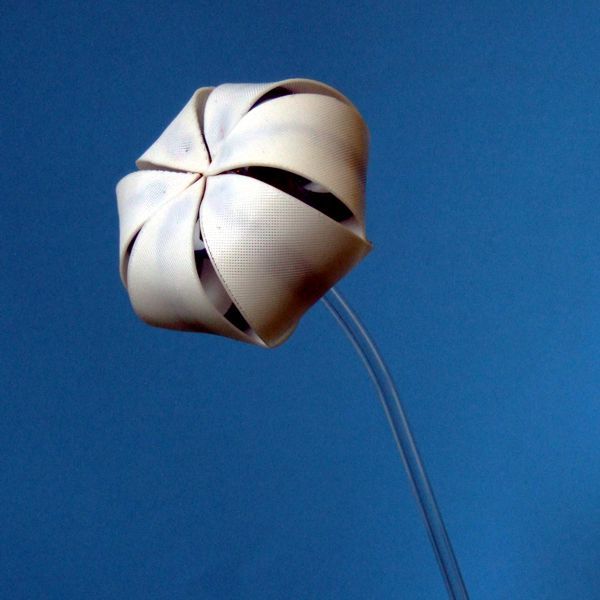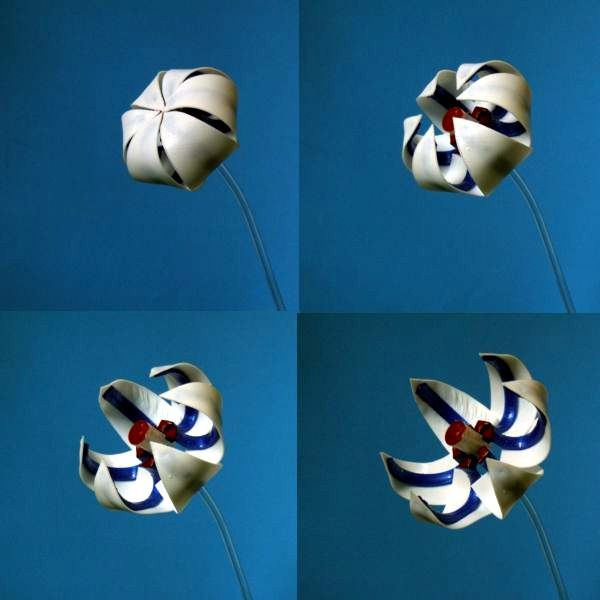Soft robots are objects created with specialized geometry that allow for complex movements, without the necessity of mechanized components. Typically they are given motion via controlled air pressure that inflates and deflates internalized air bladders. They can be used in multiple applications, including medical devices and even toys.
I’ve written about the process of creating your own soft robots previously; however the process that I detailed required 3D printable molds used to cast flexible silicone parts. But using NinjaFlex and a sealing glue allows you to 3D print your own soft robots on any desktop 3D printer capable of using the ultra-flexible material. Instructables user mikey77 has created a detailed guide to 3D printing your own soft robot flower and an additional pull muscle.
If you’re a regular 3DPI reader then you should recognize mikey77; he is the creator of the NinjaFlex Flexible Circuit Board Instructable, and he’s also created several Instructables on soft robotics. His latest guide details the entire process of 3D printing the air bladders or muscles of the robotic flower and assembling the entire project.
While NinjaFlexcould be water tight, the way that it is extruded causes microscopic holes that prevent anything printed in the material from holding any air pressure. So mikey77 dips his NinjaFlex parts ina flexible elastomeric glue that seals all of the holes and prevents air from leaking out. This method will allow the components to maintain an air pressure of about 22 PSI. He has tried several types of glue and Loctite fabric glue seemed to be the most effective.
Using 123D Design, mikey77 modeled the flower, beginning with the basic shapes as solids, and then hollowing them out. The walls of the flower’s parts should be about .026” thick, with an internal air channel .002” thick. The designer printed the flower pedals on a Makerbot Replicator 2, but any desktop 3D printer capable of using NinjaFlex will work; however,anyone trying this on their own printer may need to play with the wall thicknesses and printer settings.
The flower can be created cool 3D printable art or it can also be used as a pressure indicator, to detect temperature and even air pressure. Thankfully, NinjaFlex is available in lots of colors, so if you build your own soft robotic flowers you can make them virtually any color that you like. If you’re interested in soft robotics, but the previous tutorials seem too complicated or has too many steps, then this is the ideal starter project to begin exploring the concepts.
You can read mikey77’s entire Instructable here and see all of his great projects on his profile page. If you want take soft robotics to the next step, then you can check out the Soft Robotic Tool Kit created by Harvard University. And if you have made your own soft robots I would love to see them, so either post them in the comments section or tweet them to me @SJGrunewald!





